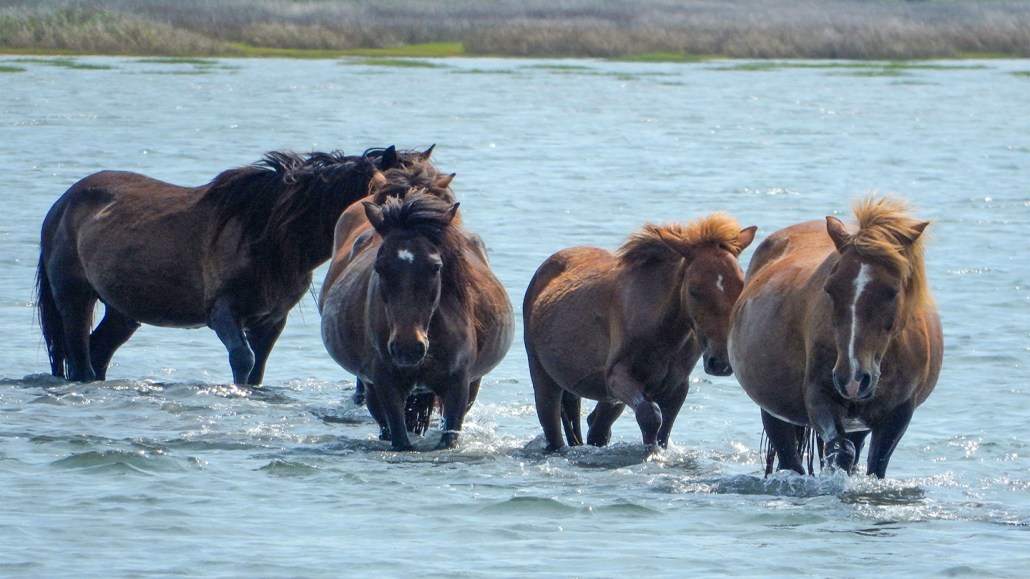Male mammals aren’t always bigger than females
Biologists long assumed female mammals are usually smaller than males. That’s probably not true

In most equids, such as these feral horses wading in the waters of Shackleford Banks Island, N.C., there’s little difference in size between the sexes.
Daniel Rubenstein
The idea that male mammals tend to be larger than females has been scientific dogma since Darwin. Bigger bodies, the thinking goes, are better in the battle to win the attention of choosy females.
Turns out, that dogma may need updating.
In just over half of roughly 400 mammal species, females equal, or outweigh, their male counterparts, researchers report March 12 in Nature Communications. The persistence of the larger male narrative, the scientists say, reflects biases in the scientific literature that have existed for over a century and have constrained biologists’ understanding of how sexual selection works.
The standard story has “just been this assumption that most people have gone along with without good evidence,” says Kaia Tombak, an evolutionary biologist at Purdue University in West Lafayette, Ind.
Scientists have long noticed that males and females of the same species can differ in size, a phenomenon called sexual size dimorphism. To understand what drives these differences, field biologists have often turned to big, charismatic mammals — like lions or gorillas — which often have larger males. The dogma was propped up also by analyses that didn’t report size variation within a species, Tombak says, an omission that makes it hard to tell for sure whether a species is dimorphic.
“We tried to get at this question by being a bit more rigorous,” Tombak says.
She and her colleagues analyzed data on the masses of males and females in 429 mammal species. Forty-five percent had heavier males, on average, 16 percent had heavier females and 39 percent of species had no difference. The team found similar trends when they looked at data on animal length. Well-studied groups like carnivores, primates and ungulates were skewed toward heavier males. But nearly half of bats had heavier females, and in about half of rodents, males and females weighed about the same.
The study included only about 5 percent of all mammal species. Tombak acknowledges the numbers could change with more research, but because the team covered most of the mammalian evolutionary tree, she’s confident the team got the overall picture right.
Previous studies have showed that larger females are quite common. But, says evolutionary biologist Malin Ah-King of Stockholm University, “the research has been male-centered, and equivalent evolution of females [has] often been overlooked.” As a result, she says, the idea that males are bigger to compete for access to “passive, coy” females became entrenched.
“The real power of this study,” says evolutionary biologist Catherine Sheard, “is that they were very careful and methodical.” The results, she says, underline that “there are things that people just blithely assume because they haven’t thought about it since the first year of undergrad biology.”
Ditching those assumptions can free biologists to ask new questions, including why females are bigger in some species or what forces keep others the same size, says Sheard, of the University of Aberdeen in Scotland. “Re-examining these biases that have been structuring how we do science has opened up a clearer understanding of what’s going on in the natural world.”






